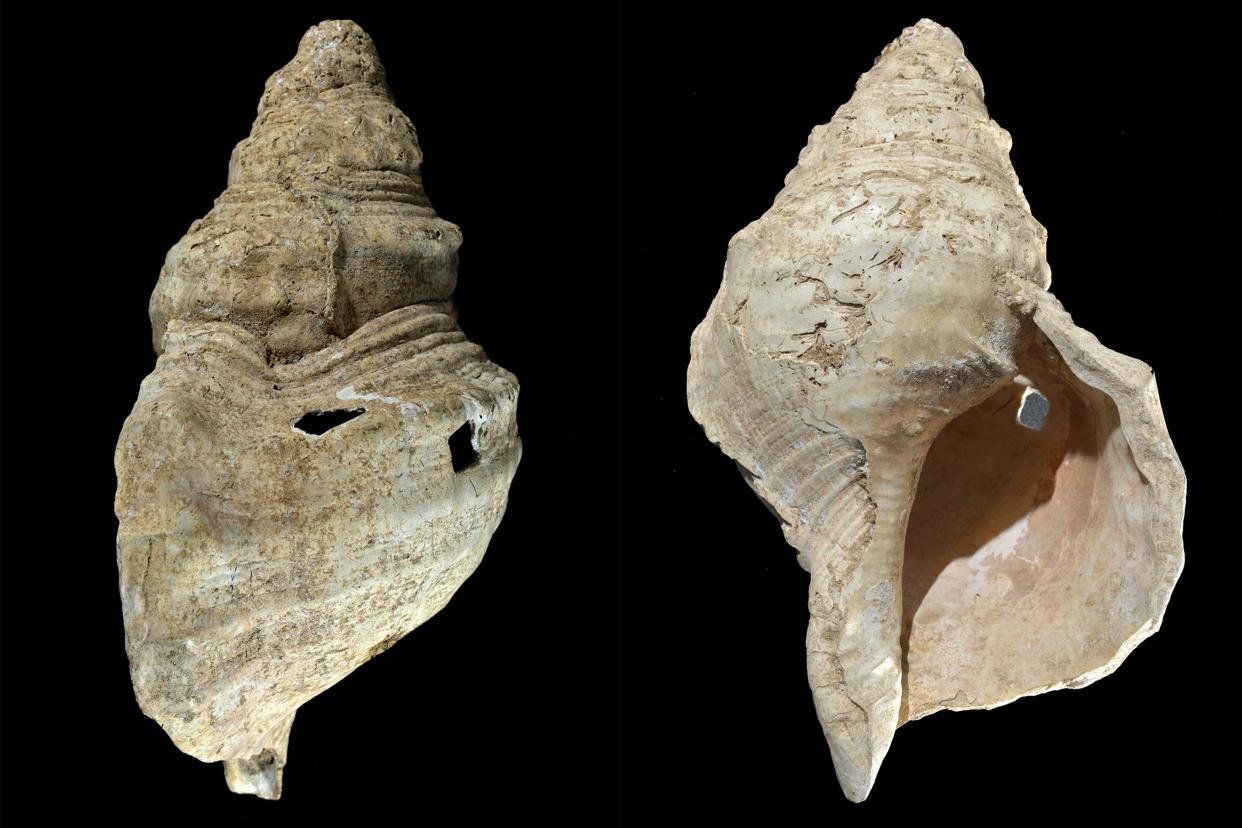Conch shell thought to be ceremonial cup turns out to be 18,000-year-old instrument
A large conch shell that had been languishing in a museum for decades has been revealed as the oldest known seashell instrument after archaeologists examined it more closely and realized belatedly what they’d been looking at.
Moreover, it still works. And it’s 18,000 years old.
Before this the oldest known such instrument was a 6,000-year-old version from Syria.
Humans have been plucking musical notes from the air for millennia, fashioning instruments out of whatever nature-made materials were at hand — bird bones, mammoth tusks and yes, conch shells — in ancient Greece, Japan, India and Peru, so use of the instrument itself was no surprise.

But its age, and the fact that it had been interred in the museum without its true purpose being known, set it apart. When this particular conch shell was discovered in 1931, it was assumed to be a ceremonial drinking cup. But while taking inventory at the Natural History Museum of Toulouse in France recently, researchers noticed some telltale signs of human intervention, the researchers at the University of Toulouse said in a study published Wednesday in the journal Science Advances.
For one thing its tip had been chipped off, which made a hole large enough to blow through. Putting it under a microscope revealed that that that had been deliberate and carefully crafted, rather than occurring from wear and tear, according to Toulouse archaeologist Gilles Tosello. Given that the tip is the toughest part of the shell, it couldn’t have broken off by accident, the researchers said in a statement cited by CNN.
Doing more sleuthing, the researchers inserted a tiny medical camera inside the shell and discovered another hole that had been carefully drilled in its inner chamber, and traces of red pigment matching a decorative pattern on the wall of Marsoulas cave, in the French Pyrenees. It also showed signs of once having had a mouthpiece.
They got cornist J.M. Court to blow into the shell, and it actually produced notes — a clear C, C sharp and D, as NPR reported.
“This seashell horn, with its unique sonority, both deep and strong with an enduring reverberation, sheds light on a musical dimension until now unknown in the context of Upper Paleolithic societies,” the study authors said. “This is the first time that a symbolic link is attested between an ornate cave and a musical instrument.”
Not only that but it also links music to the wider ancient world.
“The findings speak to a global musical tradition, shared across disparate cultures,” noted the website Inverse. “Both prehistoric and modern-day people in countries ranging from New Zealand to Japan have regarded conch shells as significant cultural artifacts due to their musical qualities.”
“This discovery reminds us that their lives were much richer and more complex than just stone tools and big game,” Margaret Conkey, an archaeologist at the University of California, Berkeley, who was not involved in the research, told The Associated Press of that ancient culture.
With News Wire Services
